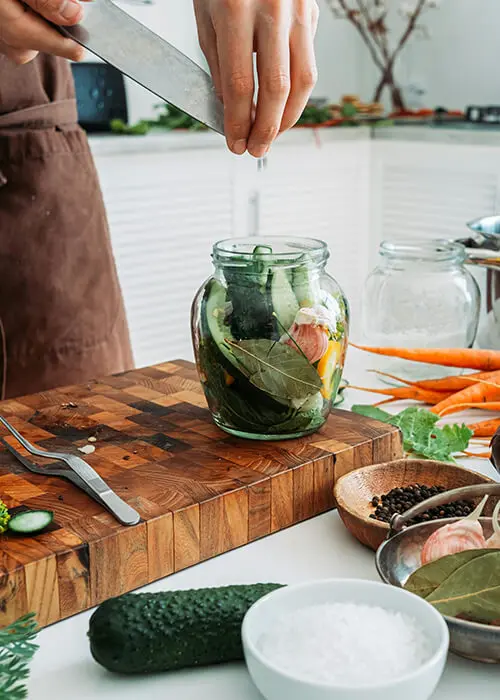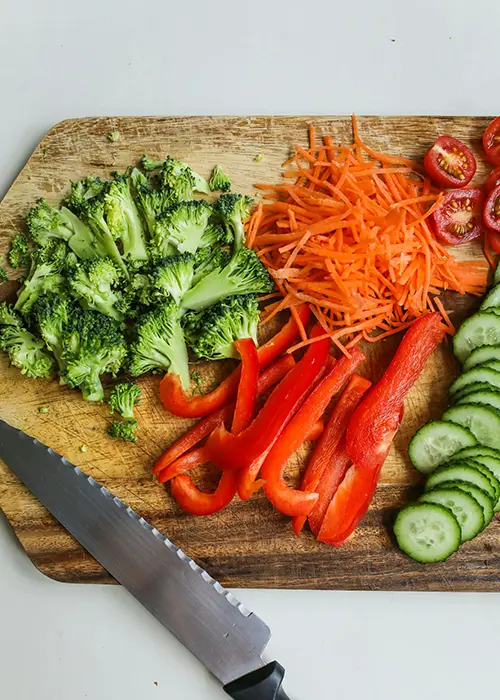Imagine: A morning walk through your garden, greeted not only by blooming flowers but also by juicy tomatoes, crisp cucumbers, and colorful bell peppers. Welcome to your veggie garden! A veggie garden not only allows you to grow fresh vegetables right at your doorstep but also provides a deeper connection to nature and a source of relaxation and joy.
Follow us through the first steps and learn how to create your own green oasis, whether on your balcony, in your own garden, or in a community garden. Have fun reading and implementing!
Location check:
Where your vegetable garden thrives best
Choose a sunny spot for your vegetable garden, ideally with at least six hours of direct sunlight per day. Tomatoes and peppers love the sun, while lettuce and spinach don’t need as much sun.
The soil makes the difference:
Tips for optimal preparation
Preparing the soil is key to a successful harvest. Loosen the soil, remove weeds, and top it up with fresh earth. Another crucial aspect is fertilization.
Use organic fertilizers like compost or well-rotted manure to increase soil nutrients. However, not all vegetables grow equally well in all types of soil. Carrots and radishes thrive best in loose, sandy soil, while spinach and cabbage prefer slightly heavier soil.

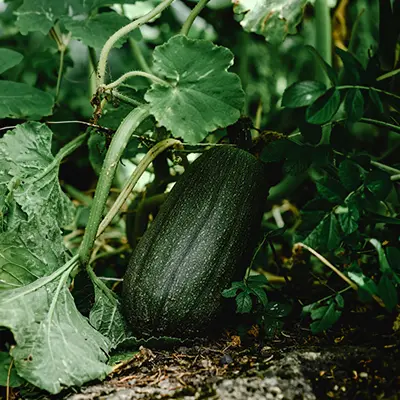
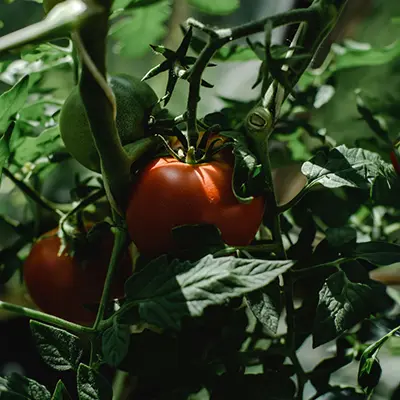
Now it’s time to plan your vegetable garden. Create a garden plan to utilize the available space optimally. Ensure that larger plants like tomatoes and zucchini do not overshadow smaller ones. Use vertical space for climbing plants like peas and beans to save space.
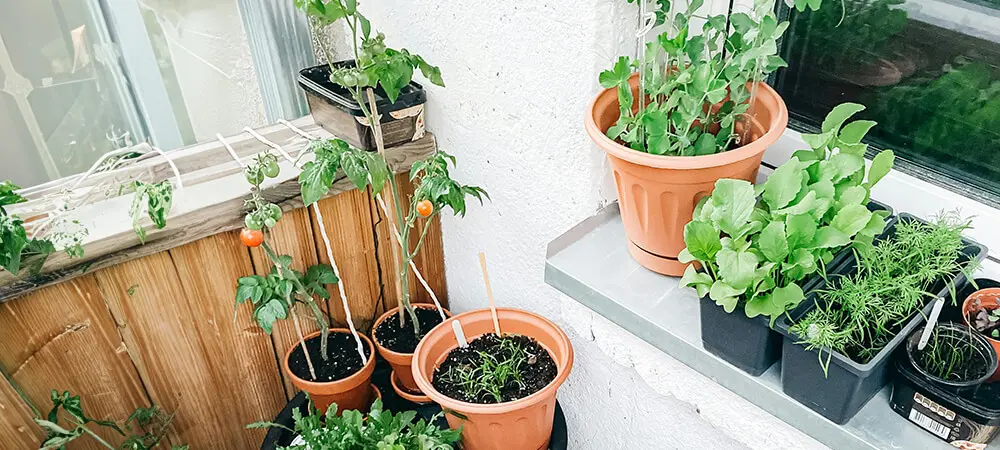
PRO TIP:
Vertical variety - Raised beds and container gardens for any space
Why only spread out when you can go up? Raised beds and container gardens are the answer if you have limited space. Space-saving and still great for growing vegetables! Raised beds have the advantage of better aeration and warmth, promoting plant growth. You can build raised beds yourself or create them from pallets for a cost-effective and environmentally friendly solution.
Building a raised bed – step-by-step guide
A raised bed made from pallets is a simple and sustainable way to expand your vegetable garden. You’ll need:
- 3-4 pallets
- A piece of pond liner or garden fleece
- Screws and a screwdriver
- Optional: paint or wood preservative
Assemble the pallets into a rectangular frame and secure them with screws. Line the inside with pond liner or garden fleece to protect the wood from moisture. Fill the raised bed with a mix of garden soil and compost. Now you can start planting!
Ready to plant? It’s not that simple! Sowing is one of the critical steps for a successful and bountiful vegetable garden. The right timing and planting techniques play a significant role in growing healthy and robust plants. Generally, follow the instructions on the seed packet for planting seedlings or seeds.
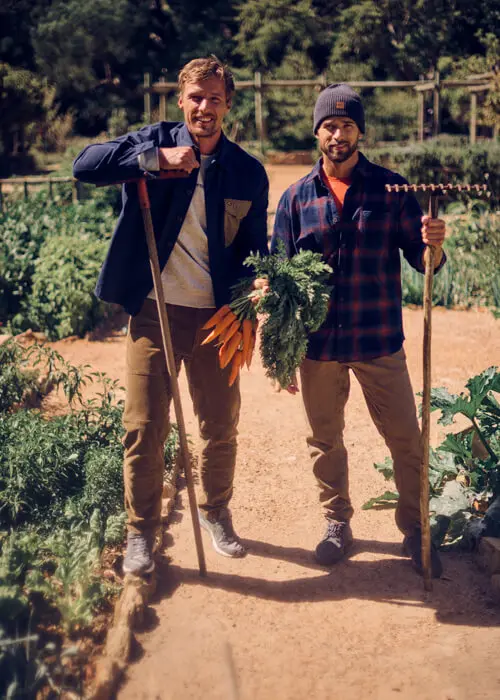
The right time
The sowing time depends on the vegetable type and your garden’s climate:
• Spring: Early starters like spinach, radishes, peas, and lettuce are ideal for spring. These plants can tolerate cool temperatures and should be sown early.
• Summer: Warm-weather plants like tomatoes, cucumbers, zucchini, and peppers are sown after the last frost days. These vegetables need warm temperatures and plenty of sunlight.
• Fall: Cabbage, carrots, and beets are perfect for sowing in late summer or early fall. These plants can tolerate cooler temperatures and provide a late harvest.
Essential methods
• Direct sowing: Seeds are sown directly into the prepared bed. Ensure seeds are sown at the recommended depth and spaced sufficiently to promote healthy growth.
• Pre-planting: Some plants, such as tomatoes, peppers, and cucumbers, benefit from pre-planting indoors or in a greenhouse. Sow seeds in small pots or seed trays and keep the soil consistently moist. Once the seedlings are strong enough and outdoor temperatures are suitable, transplant them into the garden.
• Row and group planting: Sow seeds in rows for easy care and harvesting. Alternatively, try group planting, where plants with similar needs are grouped. This promotes growth and makes care easier.
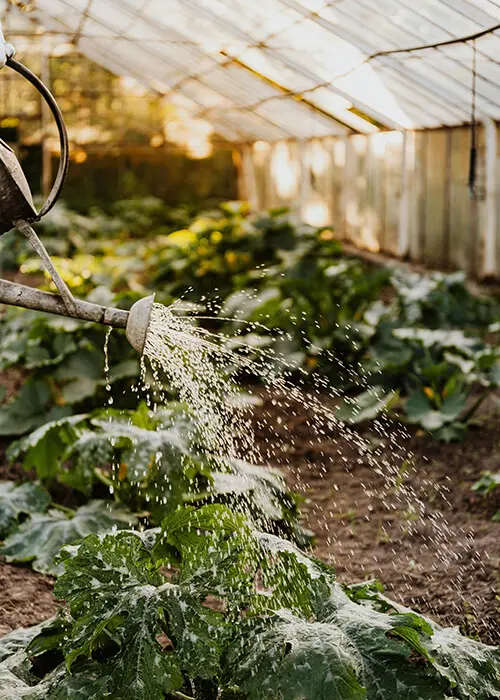
Watering and care after sowing
After sowing, proper watering and care are crucial. Keep the soil consistently moist to support seed germination. Water carefully with a fine spray or a drip irrigation system to avoid displacing the seeds.
Also, collect rainwater in barrels and use it for watering to save water. A mulch layer of straw or grass clippings helps retain soil moisture and prevents weeds.
Regularly check the soil and remove weeds. Monitor your plants for pests and diseases and fertilize regularly with an organic fertilizer.
Pest and disease control – natural and effective
Your plants will be loved not only by you but also by “pests.” But there’s no need to get aggressive and use chemicals. You can combat pests and diseases naturally. For example, use beneficial insects like ladybugs to eat aphids and neem oil against mites and beetles. Copper bands around beds and pots keep slugs away as they avoid contact with copper. In case of fungal infections, remove affected leaves and ensure good plant ventilation. Generally, healthy soil and mixed cultivation strengthen your plants and make them more resistant to pests and diseases.
Whether on the balcony, in the garden, or in a community garden – your green paradise awaits you. With our tips and a bit of patience, you’ll soon enjoy the fruits of your labor. The best part: through planning, care, and harvesting your garden, you’ll not only learn valuable skills but also actively contribute to a more sustainable lifestyle. So get started and transform a piece of our earth into a blooming green oasis full of life and flavor!
Basic equipment -
In 10 steps to your vegetable garden:
With these 10 things, you’ll be well-prepared to start and maintain your vegetable garden.
1. Planters or raised beds: To grow your plants, especially if you have limited space or poor soil.
2. Seeds or seedlings: For the plants you want to grow.
3. Compost or fertilizer: To improve the soil and provide nutrients to your plants.
4. Nets or fences: To protect your plants from pests and rodents.
5. Plant labels or tags: To identify your plants and keep track of them.
6. Shovel: For digging holes and turning the soil.
7. Rake: To loosen the soil and remove weeds.
8. Pruning shears: For trimming plants and removing dead material.
9. Hand trowel and fork: For planting seedlings and loosening soil in small areas.
10. Watering can or garden hose with a spray nozzle: For watering your plants.









